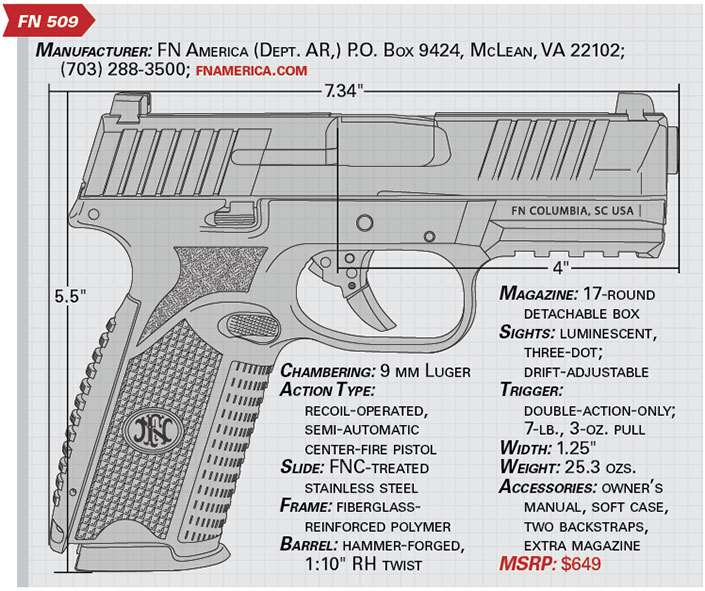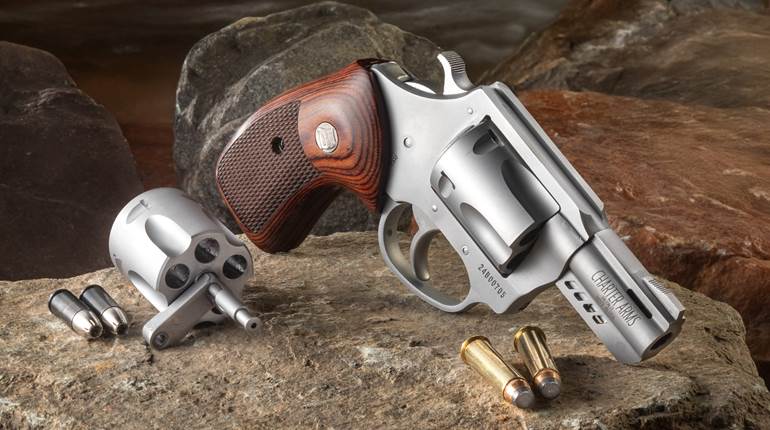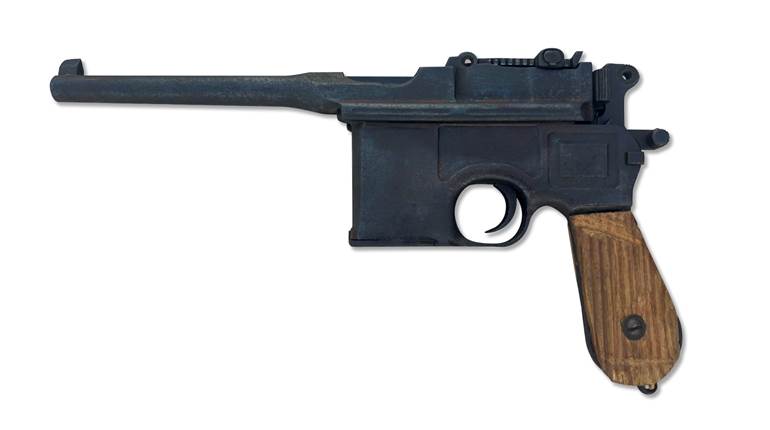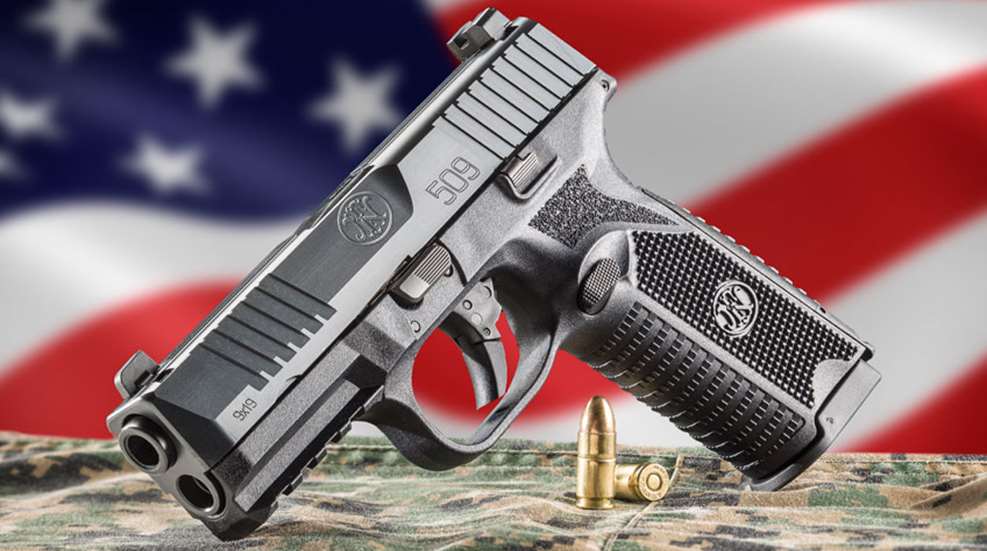
Perhaps no modern gun manufacturer’s legacy is more writ in the blood of tyrants than that of Belgium’s Fabrique Nationale d’Herstal. We’ve come to expect marketing speak to be hyperbolic, but FN isn’t just blowing smoke when it claims to build “The world’s most battle-proven firearms.” Formed in the late 19th century for the prescient purpose of arming Belgium’s military in light of Europe’s increasingly volatile political climate, FN would quickly see its Model 1889 Mausers put to good use during World War I in defense of the motherland against the Kaiser’s invading armies. And, with the exception of a few years while under German occupation during both world wars, the company’s arms have been fighting for freedom ever since.
Fabrique Nationale owes much of its early success to close association with John Browning, who first crossed the Atlantic to partner with the company to build his Model 1899 pistol and Automatic-5 shotgun designs. This affiliation would lead to FN producing some of the most iconic military firearms of the 20th century, including the High Power pistol and the M2 machine gun. The gunmaker’s FAL, designed by Browning’s protégé, Dieudonné Saive, would go on to become such a mainstay of NATO’s arsenal that it earned the nickname “the right arm of the free world.” And while the American military would never adopt that particular rifle, the U.S. Ordnance Dept. is no stranger to the company’s product line—at present, FN holds six contracts to supply arms for the U.S. military (M4A1, M16A4, MK 19, SCAR, M249, M240).
So it should come as little surprise that development of the firm’s newest handgun initially came about as the result of a U.S. Army Request For Proposal seeking a new duty gun to replace the Beretta M9—the XM17 Modular Handgun System (MHS). Any time the military offers a requirement for submissions, while there is ultimately only one recipient (in the XM17’s case, SIG Sauer’s P320), the entire gun community wins. This is because, as a result, the civilian market is inevitably hit with many of the unselected entrants, most of which are eminently worthy designs; they simply weren’t the right fit for that particular requirement. FN’s new pistol, the Model 509, is one such gun.
FN didn’t have an off-the-shelf solution to the MHS’s design criteria, however, so the company’s engineers set themselves to the task of creating a new gun, using the existing architecture of the FNS Compact as a starting point. FN’s FNS series was added to the product lineup in 2011, and as an evolution of that line, the 509 retains many of the primary design features of its progenitor. As such, it is a polymer-frame, striker-fired, recoil-operated semi-automatic pistol chambered in 9 mm Luger that feeds from a double-stack, detachable-box magazine. Aesthetically speaking, the 509 strongly resembles its ancestor, looking more than anything like a slightly beefed-up full-size FNS-9. Despite the resemblance, several external modifications to the design are evident, and a number of internal components have undergone a complete re-design in order to ensure maximum reliability and durability.
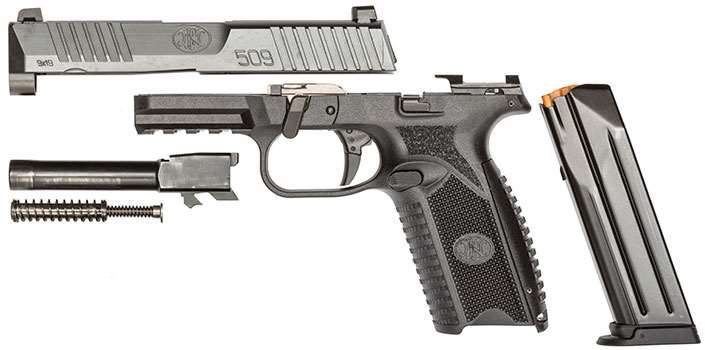
Standing 5.5" tall and 7.34" long with a 4" barrel, and weighing 25.3 ozs. with an empty magazine, the 509 is a tilting-barrel, locked-breech autoloader with barrel-hood-to-ejection-port lockup. A captive, dual-nested recoil spring assembly returns the slide to battery once the pistol is fired, this configuration being used because it reduces stress on the springs and increases the service life of these parts. The gun’s steel magazines have a standard capacity of 17 rounds, although 10-rounders will be available for those jurisdictions that require them.
The 509 uses a partially pre-cocked, double-action-only striker system, whereby pulling the trigger first completes the process of cocking the striker before disengaging the striker block and releasing the striker to impact the cartridge’s primer. Designed as a duty pistol with military and law enforcement customers in mind, FN calibrated the 509’s trigger to break between 5 lbs., 8 ozs., and 7 lbs., 8 ozs., of pressure—light enough to be easily manageable, but heavy enough to discourage accidental discharges during high-stress situations.
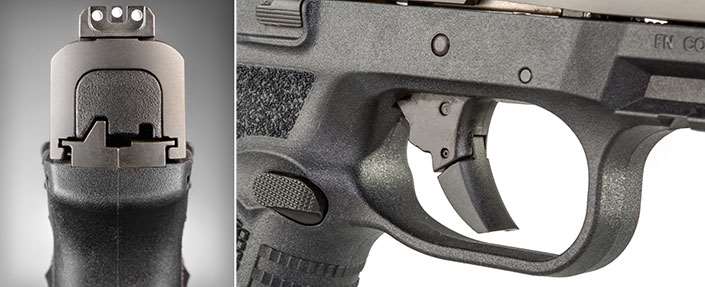
While the 509 does not feature a manual safety, it does make use of four passive safety systems—a striker block, a drop safety, a trigger disconnect and a trigger safety lever—which prevent the pistol from firing unless the trigger is deliberately pulled and the slide assembly is in battery. Many striker-fired pistols on the market today utilize Glock-style, “blade-in-trigger” trigger safeties, but FN instead chose an articulated trigger safety when developing the FNS line, and this configuration is retained in the 509. According to the company, there is no downside to this type of trigger, while its research revealed that some shooters experience discomfort when using the blade-style trigger safety.
FN is a company that takes ambidexterity very seriously, in both its handgun and longarm lines, and that design philosophy is clearly on display in the 509. Identical, bilateral magazine releases and slide locks are found on each side of the gun, and the company’s reasoning behind this is three-fold. One, this configuration doesn’t exclude any shooters from using its products; this may sound simplistic, but there are many handgun designs on the market today that do. Two, it allows a single home-defense handgun like the 509 to be utilized by every member of that household, regardless of their respective hand and eye dominances. And lastly, injury or situational tactics may require that a handgun be run one-handedly, and bilateral controls allow this to occur regardless of whether the primary or support hand is being used.
It is on the 509’s fiberglass-reinforced polymer frame where the most obvious changes to the FNS can be observed; the latter’s relatively blocky shape giving way to a much more ergonomic form. This is most notable high up on the frame, where the grip narrows slightly to create a slimmer approach to the trigger guard. This area, between the slide stop and the magazine release, now also features more aggressive, skateboard-tape-like texturing to enhance control during recoil. In addition, the horizontal serrations on the frontstrap of the FNS have been replaced with what the company calls “dragon-scale” texturing that improves purchase without being overly abrasive. A fairly pronounced beavertail on the frame of the FNS has also been cropped shorter on the 509.
The 509’s frame isn’t a complete re-design, however, as the blunted-pyramid texture for which FN handguns have become known is still present on both sides of the grip, as is a molded-in rendition of the company logo. Formed into the 509’s dustcover is a four-slot section of Picatinny rail that should accommodate virtually all light and/or laser attachments that the user may choose to install. The pistol also features a replaceable backstrap system that allows the circumference of the grip to be altered to suit the needs of multiple shooters. Each backstrap insert includes a small, recessed lanyard loop. The guns will ship from FN with a curved “Medium” backstrap installed, but a flat “Small” replacement is included, and a “Large” backstrap option will be available for purchase as an accessory. Removal of the backstrap only requires pushing out the retaining pin with a small roll pin punch.
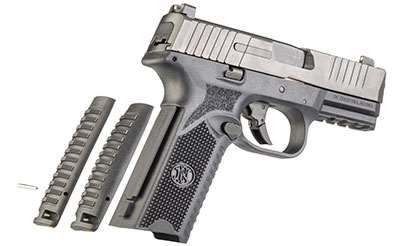
Moving away from the PVD (Physical Vapor Deposition) coating previously used on FN handguns, the 509’s stainless steel barrel and slide instead undergo a ferritic nitrocarburizing (FNC) process that hardens the substrate without negatively affecting part tolerances. Like the FNS, the 509 has a cold hammer-forged barrel, however, unlike its forebear, the barrel of the new gun features a recessed crown that should aid in the stabilization of the projectile as it exits the muzzle while protecting the barrel’s rifling. The small, tightly packed cocking serrations fore and aft of the FNS have also been broadened and elongated on the 509 to make them easier to engage in stressful conditions and while wearing gloves.
When a round is chambered, the rear portion of the external extractor pivots inward ever so slightly, revealing a sliver of red paint on the slide directly above the right-side slide stop. This functions as a visual loaded-chamber indicator in situations with adequate lighting, but will likely not be visible in circumstances with compromised lighting, and is not a significant enough protrusion to provide tactile indication of a loaded chamber—particularly when the user’s hand is clad in gloves.
The 509’s sights consist of dovetailed inserts, providing a 5.75" sight radius, with photo-luminescent dots in a three-dot pattern, which glow in the dark for a short period after being charged by a light source. As previously mentioned, the pistol was designed with potential one-handed use in mind, and as such, the front surface of the rear sight is flat to allow it to be used to rack the slide against any hard surface. FN will also offer tritium night sights as an aftermarket accessory for those interested in upgrading.
Disassembly of the 509 can be accomplished by unloading the pistol, locking the slide to the rear and pivoting the takedown lever downward 90 degrees. Then, simply depress the slide lock, pull the trigger and push the slide assembly forward off of the frame.
The 509 feeds from an enhanced magazine that is similar to, but not identical to, its full-size FNS counterpart. The new magazines feature a high-visibility orange follower and a floorplate designed to make it easier to forcibly rip it from its well should the need arise (slight indentions in the frame also help in this regard), and have undergone an FNC process quite comparable to that of the slide assembly. As a result of these changes, 509 magazines will fit and operate in an FNS, however, the reverse is not true. And while magazine pouches intended for 17-round FNS magazines will accommodate the 509 magazines, and vice versa, the dimensions of the two handguns themselves differ just enough that holsters for one will not fit the other.
With the exception of the Five-seveN, all polymer-frame FN pistols (including the 509) are made in America at the company’s facility in Columbia, S.C.. The 509 will be available in just one commercial SKU at launch, in addition to a law enforcement model that differs only in that it comes standard with all three backstrap options, three magazines instead of two and the upgraded tritium night sights. Line extensions are likely, but for now FN is playing close to the vest regarding what these might entail.
FN is known for its rigorous testing regimen—which in the case of the 509 far exceeded the Department of Defense protocols of the XM17 program—and the company’s marketing push for the new pistol proudly touts it as a superlatively reliable firearm with more than 1 million rounds of ammunition behind its development. So when I finally got my hands on one for testing, I made it a point to run it hard and dirty.
Through approximately 800 rounds and several trips to the range, between which no maintenance or cleaning of any kind took place, I experienced only one malfunction—a failure to fully return to battery that occurred within the first 100 rounds. After that, the 509 settled in and ran without further issue. I found the controls to be conveniently located, particularly the knurled magazine release, which I could activate with my thumb without altering my grip on the pistol. Although the 509 is fairly light for a duty piece at 25.3 ozs., I found recoil to be on par with other full-size 9 mms.
The 509’s trigger deserves special mention. I measured the trigger pull prior to function testing, and was surprised by the average result of 7 lbs., 3 ozs. This figure is deceptively high, as the exceptionally crisp break belies the relatively heavy pull weight. The trigger on our sample exhibited about a 1/4" of take-up before resistance was encountered, and featured a short, consistent and audible reset.
Previous accuracy testing of the full-size FNS-9 (March 2013, p. 64) revealed results up near 3.5" at 25 yds., which is adequate for the defensive role in which a duty pistol is intended to be used, but far from spectacular for a handgun of this type. So, after running the new gun through American Rifleman’s testing protocol of five consecutive, five-shot groups with three ammunition loads, I was pleased to see the 509 better its older brother by a significant margin. Our test sample managed an average extreme spread of 2.42" between the three ammunition types, with none of the 15 groups measuring more than 2.8".
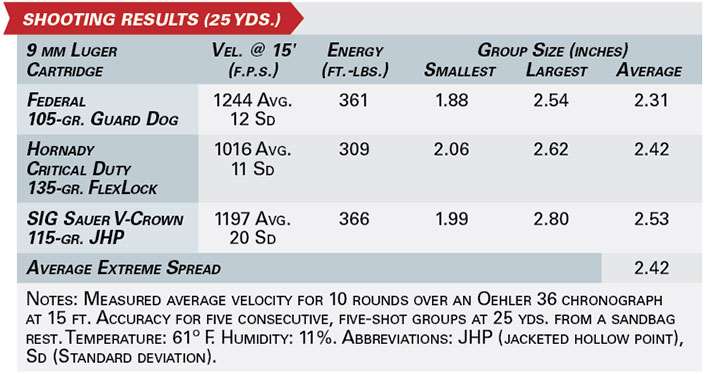
According to FN, none of the FNS-series pistols will be phased out as a result of the 509 coming online, meaning that the new gun will effectively function as a slightly more expensive, “premium” model within the existing line. In that capacity, I think the 509 shines. The full-size FNS is a capable firearm in its own right, but those willing to spend an extra $50 for an upgraded version now have that option.
While the FN 509’s bid to become the XM17 was ultimately unsuccessful, the U.S. Army’s loss is the American handgunner’s gain, as the pistol has proven itself to be a reliable and accurate design that will likely garner plenty of attention from both the law enforcement and civilian defense markets.
